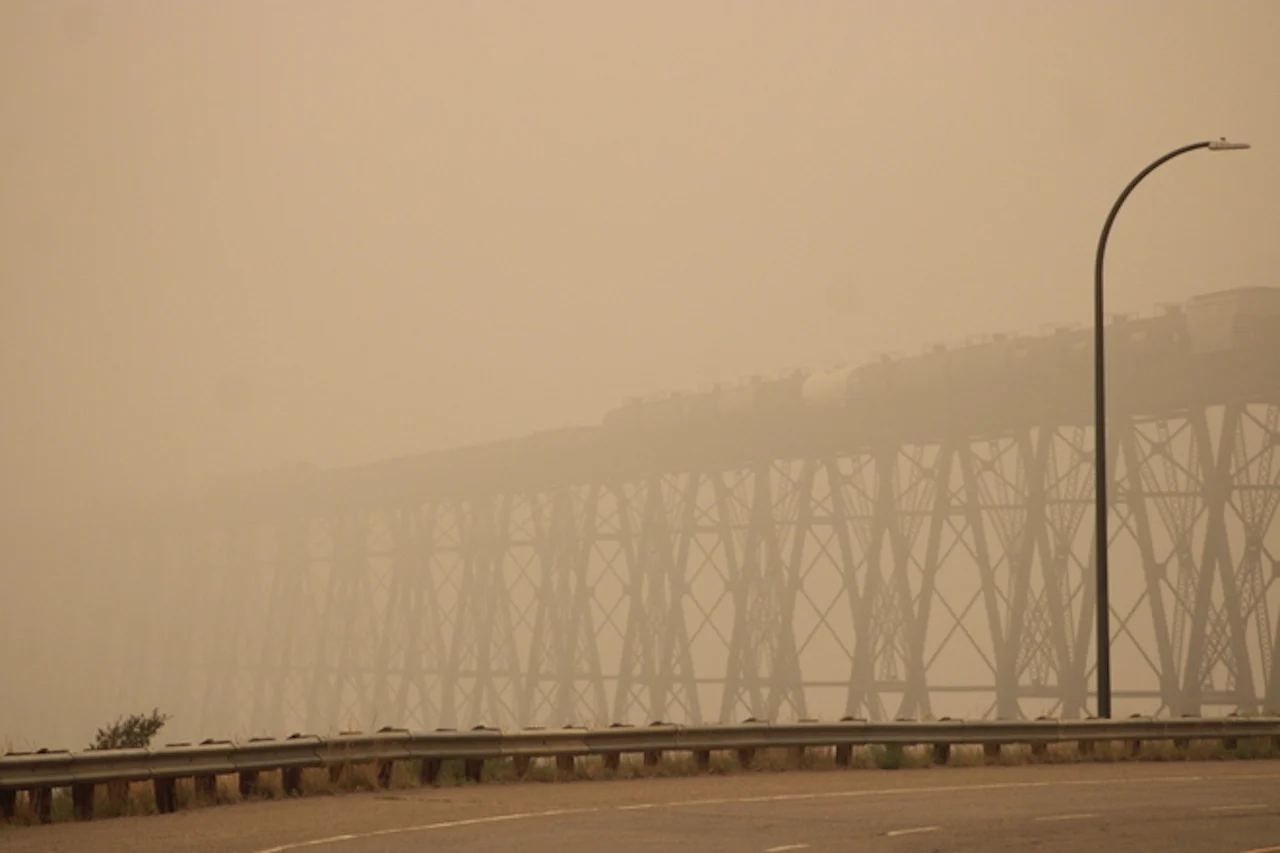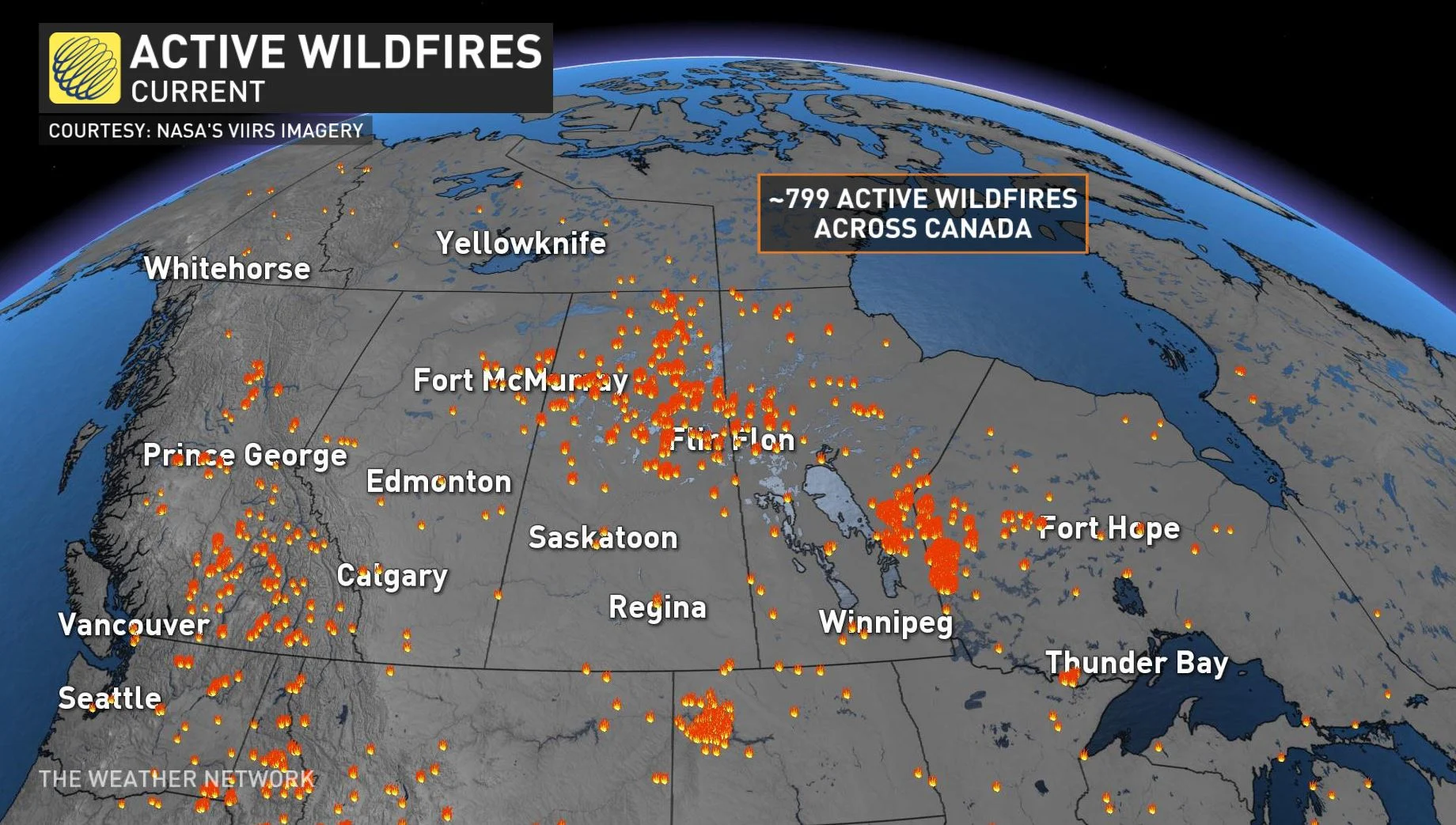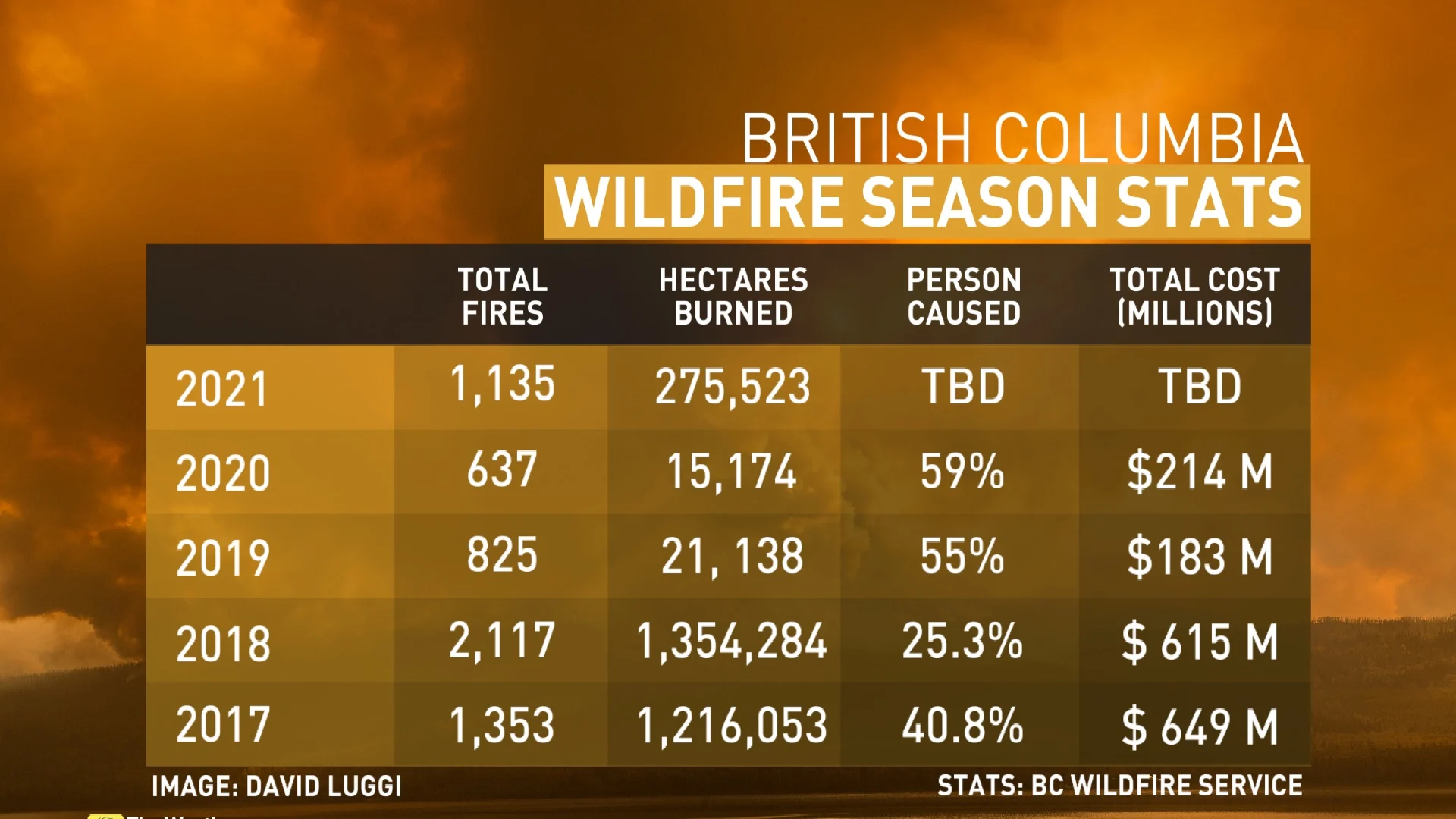
Wildfire smoke blankets skies from British Columbia to North Carolina
Smoke has been transported all over Canada due to the hundreds of wildfires that are currently on going. It has made its way to southern Ontario, Quebec, and even northern Newfoundland and into the Atlantic Ocean.
With nearly 800 active wildfires currently burning across the country, it's no wonder that mostly every province is dealing with some sort of hazy, smoky sky -- though some far worse and more impactful than others.
Special air quality statements span much of Western Canada, where the most significant fires are burning, with reduced visibilities and poor air quality affecting many communities in both British Columbia and all three Prairies provinces. It has even forced some people from their homes, as the flames and smoke continue to shift and spread.
RELATED: Prepare for the worst - 10 steps to get ready for wildfire smoke

According to government officials from B.C., accommodations for wildfire evacuees are filling up.
"If possible, the best option would be to arrange to stay with family or friends, so commercial accommodations have capacity for evacuees who have no other option," said Emergency Management BC in a press release on Sunday.
Officials are also urging people who have self-evacuated to larger communities due to the smoky conditions to consider returning home.
"Because smoky conditions shift and move, self-evacuating to another community does not guarantee a person’s exposure will be reduced," Emergency Management BC said.
MUST SEE: North America chokes in smoke, looks like an ashtray from space
The air quality in most of Alberta is expected to be "very high risk" through at least Tuesday as well, as thick wildfire smoke continues to cloud the province. According to Environment Canada, the air quality health index is expected to reach 10 or higher in most affected regions, which include both Edmonton and Calgary.
A health index rating of at least 7 is considered high-risk, with 10 or higher deemed as very high risk, according to EC.

Depending on location and the wind direction at a given time, smoke from different wildfires can affect multiple provinces at once. There is also more low level smoke the closer to the fires you are, which can have a greater impact on health and visibility.
"As the smoke gets lifted higher into the atmosphere, it can get caught up in the jet stream and other weather patterns, and can be transported to other parts of the country, or even other parts of the globe," explains Matt Grinter, a meteorologist at The Weather Network. "For instance, the smoke from the wildfires in northwestern Ontario has made its way into southern Ontario, Quebec, and has even been transported over northern Newfoundland and out into the Atlantic Ocean as well."

For those who are more vulnerable or are worried about smoke issues in your area, it's best to:
Stay indoors and keep the air clean (windows/doors closed, no smoking, no burning fireplaces/candles/incense, no vacuuming).
Reduce the amount of time spent outdoors. Avoid vigorous outdoor activities.
When in a vehicle, keep windows closed with air conditioning set to recirculate.
Visit places with controlled air supply, such as shopping malls, swimming pools, public libraries, etc.
People with asthma or other chronic illnesses should ensure they have an adequate supply of inhalers/medication, and should activate their asthma or personal protection plans.

PHOTOS: HAZY, SMOKY SKIES CLOUD MUCH OF THE COUNTRY

Lac La Ronge, Sask. - Mikayla Adam
Visit www.airhealth.ca for information on how to reduce your health risk and your personal contribution to pollution levels, as well as for current and forecast AQHI values.
Thumbnail image courtesy: Cindy Lemley, taken in Lethbridge, Alta.











